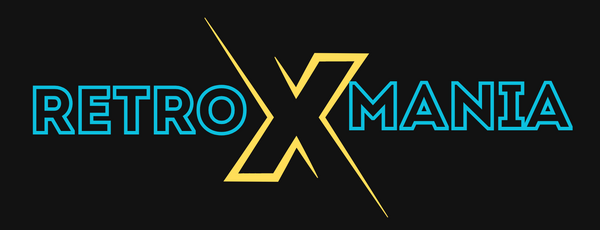Retro gaming is more popular than ever, with many enthusiasts looking to recreate their childhood gaming experiences. One of the most economical and versatile solutions is to use a Raspberry Pi to build a retro gaming console. In this article, we'll walk you through the steps to create your own retro gaming console at home.
Why Use a Raspberry Pi for Retrogaming?

The Advantages of the Raspberry Pi
The Raspberry Pi is a small, inexpensive computer that has gained popularity for its many uses in DIY projects. Here's why it's perfect for retro gaming:
Cost Effective
The Raspberry Pi is very affordable, with basic models available for less than 50 euros. This makes it accessible to those who don't want to invest in expensive retro gaming consoles.
Versatility
The Raspberry Pi can emulate a wide variety of game consoles, including classic consoles like the NES, SNES, Sega Genesis, and even the PlayStation 1.
Ease of Configuration
With distributions like RetroPie, installing and configuring an emulator is made easy, even for beginners.
Materials Needed to Build a Retro Console
Before you begin, you will need a few basic items:
Shopping List
Raspberry Pi
- Recommended model: Raspberry Pi 4 (2GB or 4GB)
- Power supply: Official power adapter or equivalent (5V 3A)
SD card
- Recommended capacity: Minimum 16GB, ideally 32GB or more
- Speed Class: Class 10 for optimal performance
Housing
- A case to protect your Raspberry Pi and give it a neat look
Cooling
- Fan or heat sink (recommended for Raspberry Pi 4)
Gamepad
- USB or wireless compatible (e.g. Xbox, PlayStation controllers)
HDMI cable
- To connect the Raspberry Pi to your TV or monitor
Keyboard and Mouse (Optional)
- For initial setup
Discover our selection of cases and accessories for Raspberry Pi .
Installing and Configuring RetroPie
Preparing the SD Card
Downloading RetroPie
Go to the official RetroPie website and download the latest RetroPie image for your Raspberry Pi model.
Writing Image to SD Card
Use software like Etcher to write the RetroPie image to your SD card. Insert the SD card into your computer, open Etcher, select the downloaded RetroPie image, choose your SD card as the destination, and click “Flash!”.
Initial Setup of RetroPie
Starting the Raspberry Pi
Insert the SD card into the Raspberry Pi, connect the HDMI cables and power supply, and boot the device. You will see the RetroPie logo upon startup.
Controller Configuration
When you first start RetroPie, you will be prompted to configure your controllers. Follow the on-screen instructions to map your controller buttons.
Transferring ROMs
Via USB key
Format a USB drive to FAT32, create a folder named “retropie” at the root, insert it into the Raspberry Pi, wait a few minutes, and then remove it. On your computer, add your ROMs to the corresponding folders (e.g., NES, SNES) inside the “retropie/roms” folder. Insert the USB drive back into the Raspberry Pi to transfer the ROMs.
Via Network
Connect your Raspberry Pi to your Wi-Fi or Ethernet network. On your computer, open a file explorer and type “\RETROPIE” in the address bar. You will see shared folders, including “roms,” where you can copy your games.
For tips on downloading ROMs, read our article on the best sites to download legal ROMs .

Personalization and Optimization
Themes and Appearance
Downloading Themes
RetroPie offers a variety of themes to customize the look of your interface. To install new themes, go to the RetroPie menu, select “ES Themes,” and choose from the available options.
Menu Configuration
You can organize and customize your RetroPie's menus to display only the systems and games you want. This can be done by editing the "es_systems.cfg" file or through the user interface.
Adding Additional Features
Backups and Save States
Use the save and save state features to save your game progress at any time. These options can be configured in the RetroArch menu accessible via RetroPie.
Shaders and Filters
Apply shaders and filters to enhance the appearance of retro games on modern displays. You can choose from a variety of options in the RetroArch menu.
For an overview of the different shaders available, check out our shaders and filters guide .
Tips and Tricks
Common Problem Solving
Performance Issues
If you experience slowdowns, try lowering shader resolution or disabling certain graphical effects. Also, make sure your Raspberry Pi is properly cooled.
ROM Compatibility
Not all ROMs will work perfectly. If you have problems, check game compatibility with the emulator you're using or try a different version of the ROM.
Keep Your System Up to Date
RetroPie Updates
Keep your system up to date by downloading the latest RetroPie updates. You can do this via the RetroPie Setup menu, by selecting the option to update the RetroPie-Setup script.
Conclusion
Building your own retro gaming console with a Raspberry Pi is an exciting and rewarding adventure. Not only will you relive childhood memories, but you'll also have the satisfaction of having built your own custom gaming system. With the right tools and a little patience, you can turn a simple Raspberry Pi into a powerful and versatile retro gaming console.
So, what are you waiting for? Get started on this project and dive into the wonderful world of retro gaming with your own homemade console!
Discover more tips and tutorials in our magazine section .



